F1 car front wings play vital roles in downforce production, but they have come in various shapes and sizes over the years. The 2022 aerodynamic regulation changes dramatically altered the way the front wings look, and also how they are used to help the cars go so fast around a track.
F1 front wings are key components on the cars that generate downforce and guide airflow under, over, and around the car. While the 2022 rule changes simplified F1 front wings to some degree, they still produce a lot of downforce and are one of the most important parts of the car.
Current F1 front wings are very different to what we have seen in the past. While they still play a key role in producing downforce, they have changed a lot in recent years, and I take a closer look at them below.
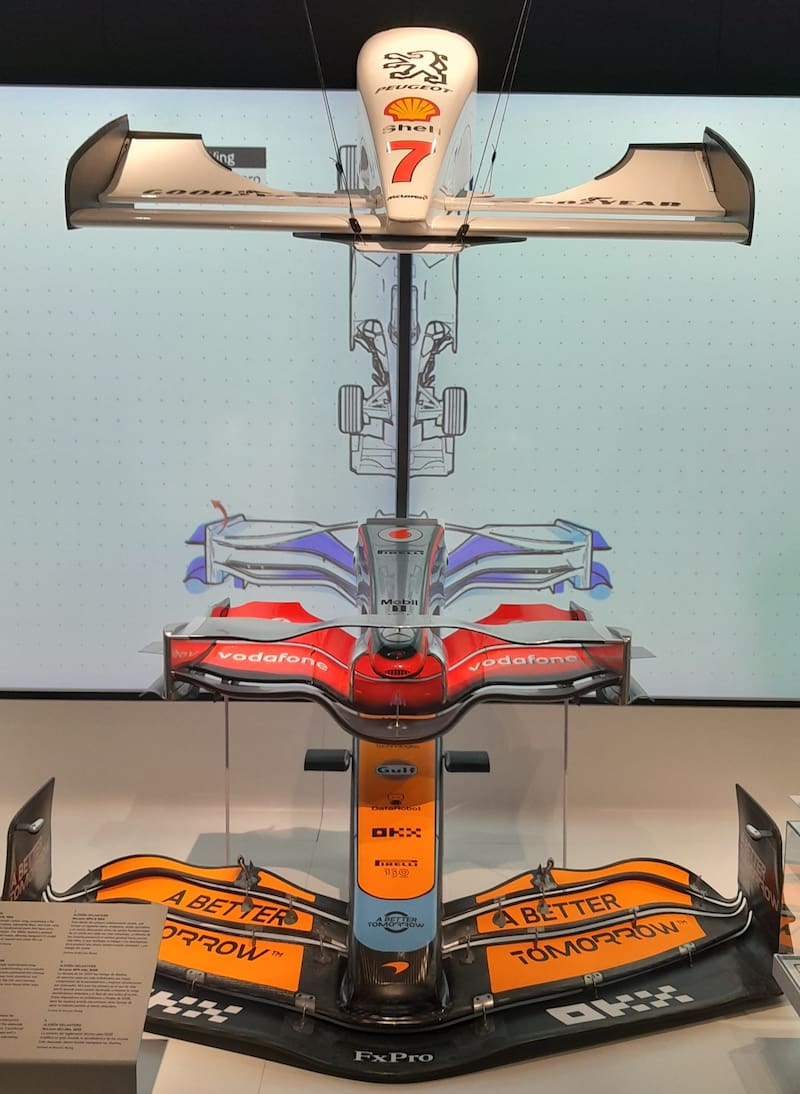
How F1 Car Front Wings Work
F1 car front wings help generate downforce and distribute and influence the airflow over, under and around the car. F1 front wings generate downforce by creating an area of high pressure above the wing and low pressure below it. However, they also generate downforce via a suction effect, referred to as the ground effect.
Let’s look at each of these in more detail to understand exactly how this works.
How F1 Front Wings Generate Downforce
The first way F1 car front wings generate downforce, and the more commonly discussed way, is by creating a pressure difference above and below the wing. To understand how, we need to talk about three things:
- The Bernoulli Principle
- The Venturi Effect
- The Continuity Equation
I’m going to simplify some things here, but it should help explain how front wings generate downforce.
The Bernoulli Principle
The Bernoulli principle, in simple terms, states that as you increase the speed of a fluid, you decrease its pressure. Air is classed as a fluid, and so if you speed up air, you can reduce its pressure. We can see this in action via the Venturi effect.
The Venturi Effect
The Venturi effect is the observed reduction in pressure when you send a fluid (like air) through a constriction (typically represented by a pipe, per the diagram below).

As we know from the Bernoulli principle above, this is because the air speeds up through the constriction, reducing its pressure. But why does it speed up?
The Continuity Equation
The Continuity Equation essentially states that the amount of fluid you put in one end has to come out the other. In more complex terms, the product of the cross-sectional area and a fluid’s velocity at any point along the pipe (or other closed system) is constant. In other words, the fluid’s speed multiplied by the cross-sectional area of the pipe is constant at each point. But why does this matter for a front wing?
Well, we can think of the journey air can take when it hits a front wing as a long way and a short way. Due to the wing’s shape, air going over the top travels a shorter distance than air going underneath. The continuity equation tells us that the amount of air going in the front needs to be equal to the amount leaving at the back.
For this to be true, the air taking the longer path (underneath the wing) must speed up. And we know from Bernoulli’s principle that this means its pressure will decrease. This creates a pressure difference over the wing, with high pressure air above and low pressure air below. This ‘pushes’ the wing towards the ground, generating downforce.
Okay, but where do the Venturi and ground effects come into play?
Using The Ground Effect
Well, the closer an aerodynamic surface is to the ground, the more lift it generates (hence ‘ground effect’). In the case of a plane, this lift pushes the plane up into the air. But on an F1 car, the wing is ‘inverted’ which means it doesn’t generate more lift the closer it is to the ground, but it generates more downforce (sometimes called negative lift).
It does this because the part of the wing close to the ground acts like a constriction in a pipe. This is the Venturi effect in action, with the pressure decreasing as the air must speed up faster to get through the constriction. This lower pressure has a ‘suction’ effect, ‘pulling’ the car closer to the ground, yielding increased downforce.
Other Roles Of The Front Wing
But it’s not just the front wing that generates downforce in this way, as the floor is an extremely important area too (actually the most important in terms of overall downforce production). It has Venturi tunnels carved into it to make better use of the ground effect, but the front wing plays a key role in controlling how much air flows into this part of the car.
Raising the front wing reduces the wing’s effectiveness at producing downforce via the ground effect, but it does allow for more airflow underneath the car to be used further back to increase downforce production via the floor and eventually the diffuser. So, there are tradeoffs to make, and various roles being performed by the front wing on an F1 car.
But now let’s consider another key part of the front wing, before looking at how the current wings differ from those used in the past.
What Do Front Wing End Plates Do On F1 Cars?
Front wing end plates on F1 cars prevent the airflow from draining off the sides of the wing and getting underneath it. If this air gets underneath the wing, it limits how effective it can be at producing downforce, and it could generate uncontrollable air vortices that would disrupt the aerodynamic components further back (I’ll talk more about vortices in the next section).
Even though they look may small and insignificant compared to the rest of the wing, the slightest amount of damage to an end plate can cause a massive performance drop for an F1 car.
Note: Just how much downforce is lost will vary from car to car and depending on the extent of the damage. We saw Charles Leclerc do exceptionally well at the 2022 British GP despite losing one of his endplates completely!
The Current F1 Front Wing End Plates
The current front wing end plates look very different to previous generations. The new, simplified endplates aim to redirect the air towards the winglets over the tires and across the wheel covers, which will deflect the air away from the car behind.

I’ll talk more about the changes to the front wings as a result of the 2022 aerodynamic regulation changes below. But it’s worth mentioning here that the current end plate designs are a major headache for F1 aerodynamicists, as they are not as capable as those on the previous cars at producing useful vortices (see the next section for more on these).
These vortices are used to keep the turbulent air off the front tires away from the other aerodynamic components further back on the car. The rules reduced these vortices both in number and in their effectiveness, and in reference to the front wing in particular, they also removed the foot plate, which was a very useful vortex generator on the outside of the endplate .
But before I go into more detail on the foot plate and the 2022 rule changes, let’s take a look at how F1 front wings worked in the past.
F1 Front Wings In The Past
Previous generations of F1 cars had complex front wings with several different elements, plates, and winglets all over them. The shapes of these wings produced downforce much in the same way that the current simplified front wings do, but the complex wings played one more significant role in terms of guiding the airflow over the car.
To help guide airflow over the cars more efficiently, an element of aerodynamics called vortices were used (and still are to an extent). These are high-energy spirals of air that manipulate the flow of air around them. In the case of the vortices coming off the front wings, the goal was to keep turbulent air away from other key aerodynamic parts further back.
This was achieved by generating outwash, which helps seal the underbody (for greater downforce production via the floor).
Note: In most cases, a vortex itself causes drag. However, it helps reduce drag elsewhere, which in the end results in a performance advantage overall.
Air vortices were also created using vanes under the wing profiles in order to allow steeper angles of attack without flow rupture of the wing (flow separation from the wing surface would induce drag, slowing the car). Or they were used to energize the boundary layer of the underbody and accelerate the air (to improve downforce production).

Cooling The Car
The vortex generation also resulted in better airflow inboard (to the radiators for example), through a channeling effect. In order to cool the car’s engine and other internals, there needs to be a lot of airflow over the radiators through the sidepods.
Using vortices allows teams to guide air around the various parts of the front of the car and into these air intakes for effective cooling. Note that the vortices themselves aren’t used for cooling, and it’s not the spirals of air that go into the sidepod inlets but rather air that is somewhat channeled by these vortices.
But there was one vortex in particular that you might have heard mentioned in the context of the previous generation of front wings in Formula 1 – the Y250 vortex.
What Is The Y250 Vortex?
The Y250 vortex was generated 250 mm either side of the car’s center line (i.e. on the Y axis) on the previous generations of F1 cars. The air in this vortex was extremely high in energy, and controlling it around the car from the front wing helped guide airflow into the cooling intakes.
The vortex was generated because of a pressure difference between the neutral middle section that was 250 mm from the center line and the rest of the front wing.

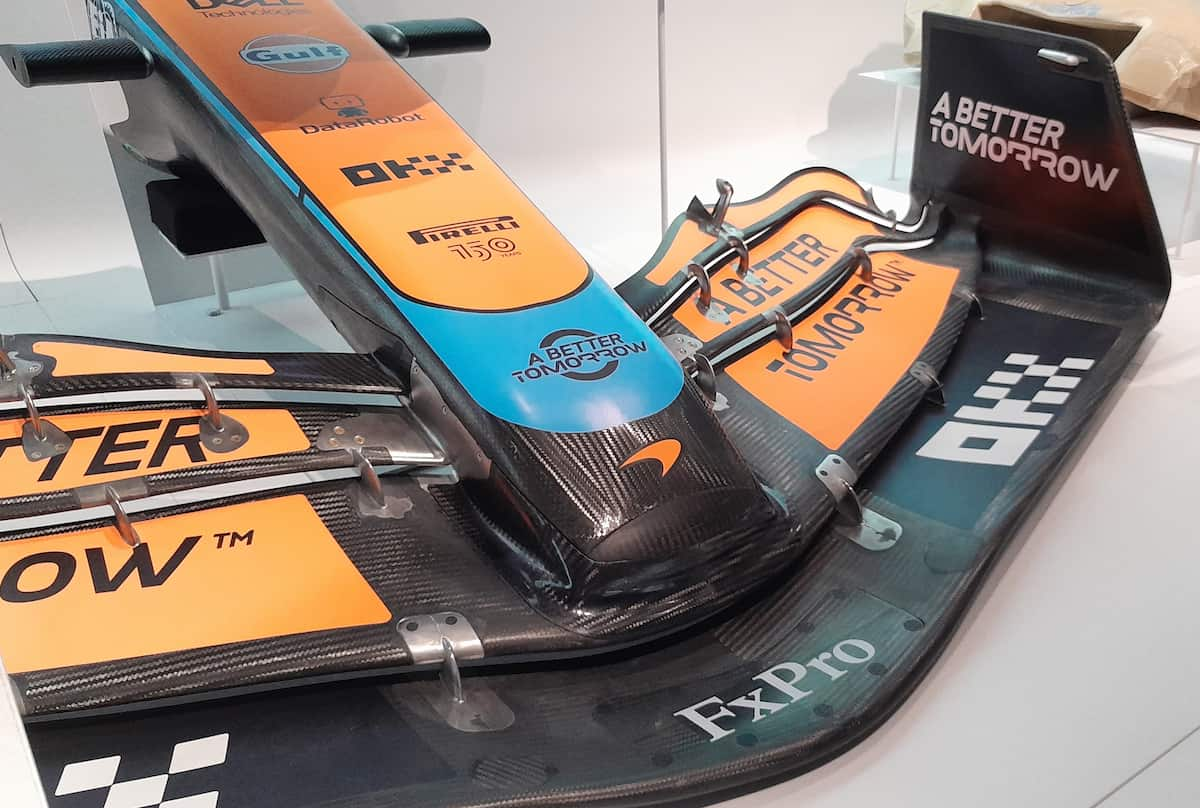
The Y250 vortex could extract air at the edge of the floor, therefore producing a suction effect that improved aerodynamic efficiency in this area. This was beneficial for the sidepod inlet and the underfloor itself. Both areas benefit from better airflow, as this suction can supply the underfloor with high energy air (useful for downforce production).
The Y250 vortex also kept the front wheel wake away from the car and importantly away from the underbody. It also acted a bit like an aerodynamic ‘skirt’ at the floor edges, preventing air from entering the underbody at the sides. It therefore significantly increased the efficiency of the underbody in terms of downforce production.
But the Y250 vortex disappeared with the 2022 regulation changes, as there could no longer be a gap between the nose cone and the front wing elements, illustrated in the images above.
The Problem Of Dirty Air
While these vortices helped the car generate downforce and direct air to the sidepods to cool the internals, it created a nightmare for the car behind by leaving turbulent, low pressure air for them to drive through, largely through the outwash generation. F1 cars are often said to “punch a hole in the air,” leaving turbulent, low pressure, low energy air behind them that trailing cars can’t generate as much downforce from.
Turbulent air is not only not as good for producing downforce, but it’s also not good for cooling. That made following cars in previous years more difficult, because not only would the trailing car not be able to produce as much downforce in the corners, therefore losing some grip, but their cars were also prone to overheating if they stayed too close for too long.
We have talked about this at length in our article all about dirty air in F1. The rule changes in 2022 aimed to reduce this issue to make it easier for the cars to follow each other. As a result, the front wing designs changed a lot as well.
How F1 Front Wings Changed In 2022
The most obvious difference when comparing the current front wings to those of the past is the shape of the front wing elements. These had to be simplified, and there can only be a maximum of four front wing elements (versus five on previous generations).
Compared with front wings in the past, which could generate up to 6 different (strong) vortices, the new rules reduced this to just two. These are the wing tip vortex (at the tips of the wings, as you might expect) and the strictly limited ‘dive plane’ vortex (the dive plane is pictured on the Red Bull front wing below).

Another big change was the removal of floor plates (see images below). These were additional elements on the outsides of the end plates. Their purpose was to prevent ambient air with higher pressure from getting under the front wing at the sides. They also generated vortices, but these are no longer possible with the absence of the foot plate.
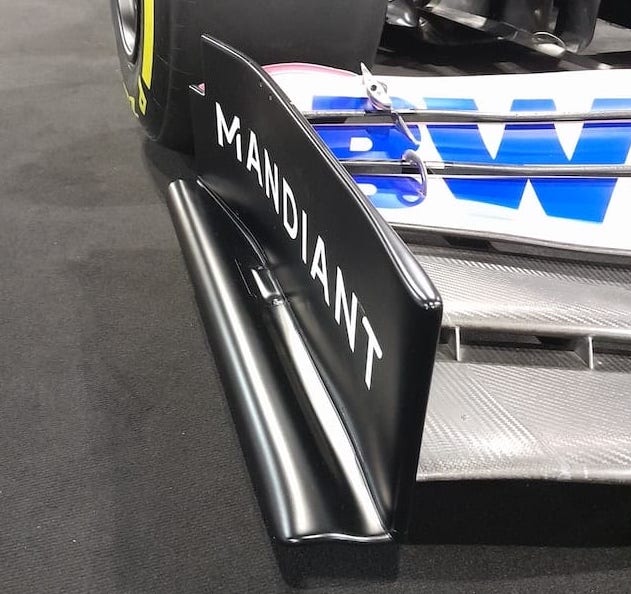

This means some air does get under the front wing, and the front wings can no longer generate outwash in the way they used to due to the lack of vortex generators. Teams have therefore had to compromise and adapt their designs to suit the rest of their aerodynamic philosophy. This is why we see so many differences between the front wings on the cars when we look closely at them.
Differences In Front Wings Between The Teams
Let’s now consider some of the main differences we have seen between the different cars’ front wings as a result of these changes. At the start of the 2022 season, Mercedes had larger elements on the outsides of the front wing and towards the insides, as closer to the nosecone there were large cut outs. This allows more air to flow into their car’s Venturi tunnels to produce downforce via the floor.

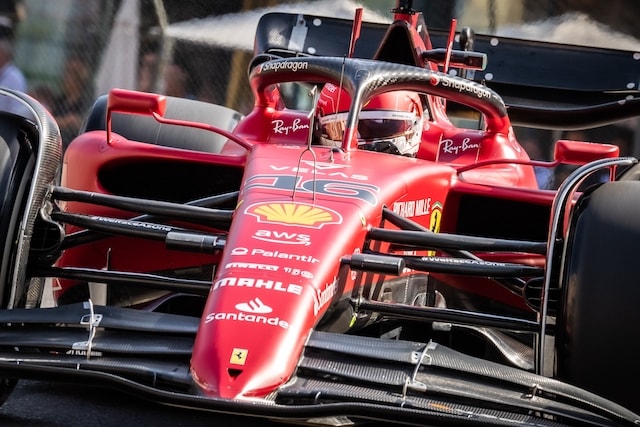
Ferrari on the other hand had a much more even front wing element which allowed less air to flow into the floor of the car. This may allow the front wing to generate more downforce, giving the car better front end grip through the high speed corners. It’s all about making the right sacrifices for the specifics of the individual cars.
Note: We are also simplifying things here, as there is often more at play than meets the eye. Plus, only the teams know the exact reasons for their specific design choices!
Front Wing Attachment
Another area where teams may take different approaches is where the front wing attaches to the nose of the car. Some teams opt to attach their front wings to the main plane of the front wing (the lowest element).
Other teams opted to attach the nose to the second plane (just above the lowest element), leaving a gap in between the lowest plane and the second plane in the front wing. Doing so leaves the lower element closer to the ground, reducing the airflow below the wing. This increases the speed of the airflow under the wing, helping with front end downforce production.
Height Of The Front Wing
Aston Martin grabbed the attention of a lot of people when they first released their 2022 car. This is because their front wing was built much higher than we usually see on a Formula 1 car, leaving the floor underneath the car relatively exposed. McLaren then released their car, and their front wing was much lower than that of the Aston Martin.
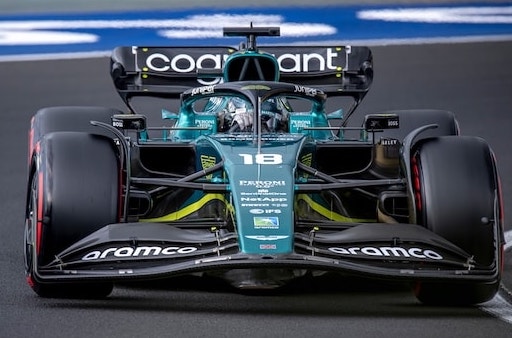

In the past, having the front wing as low to the ground as possible was preferred as it made most use of the ground effect – with more suction as a result of being closer to the ground leading to greater overall downforce. However, the cars can now use various tunnels underneath to generate downforce, and raising the front wing is beneficial as you let more air flow straight into the floor.
As an aside, after talking about F1 front wings somewhat reducing in complexity, it’s worth having a quick look at some images of front wings from the more distant past, to see just how much they’ve changed over the decades!
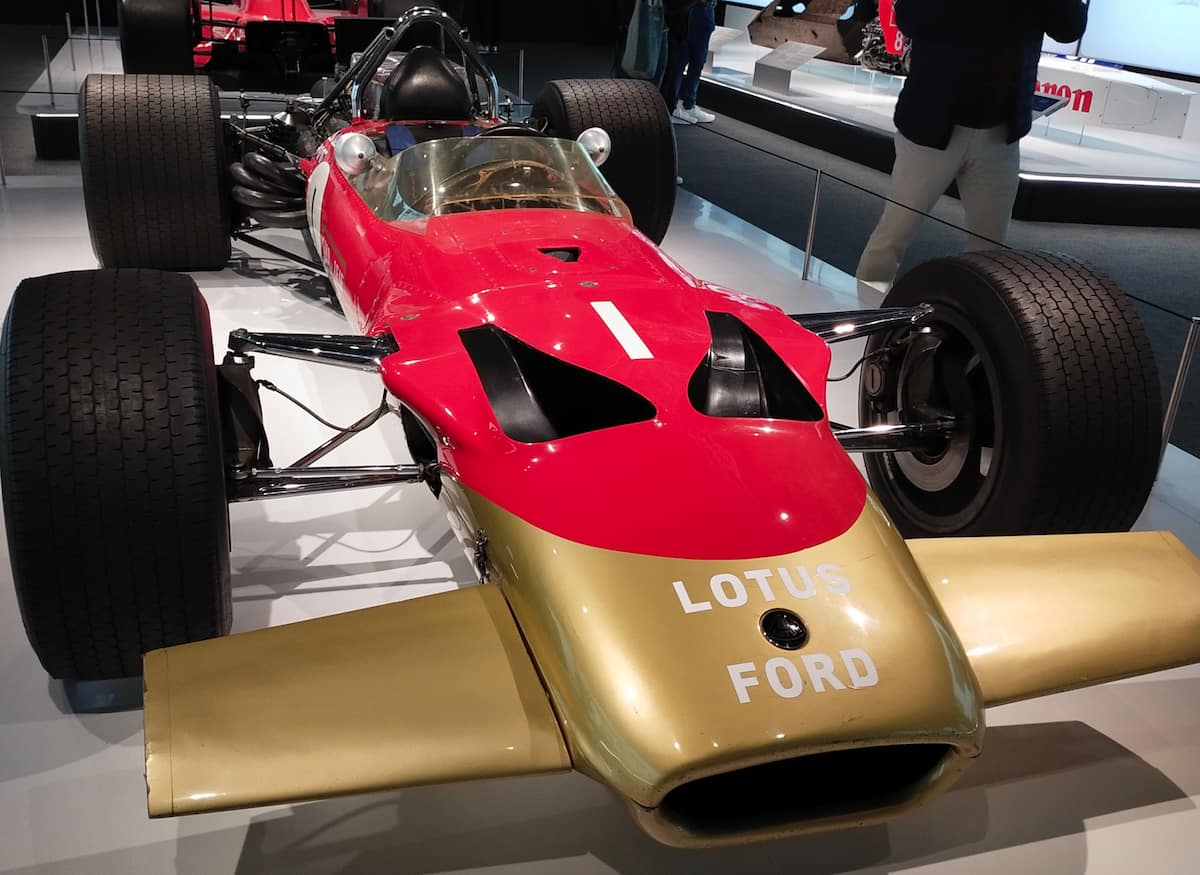
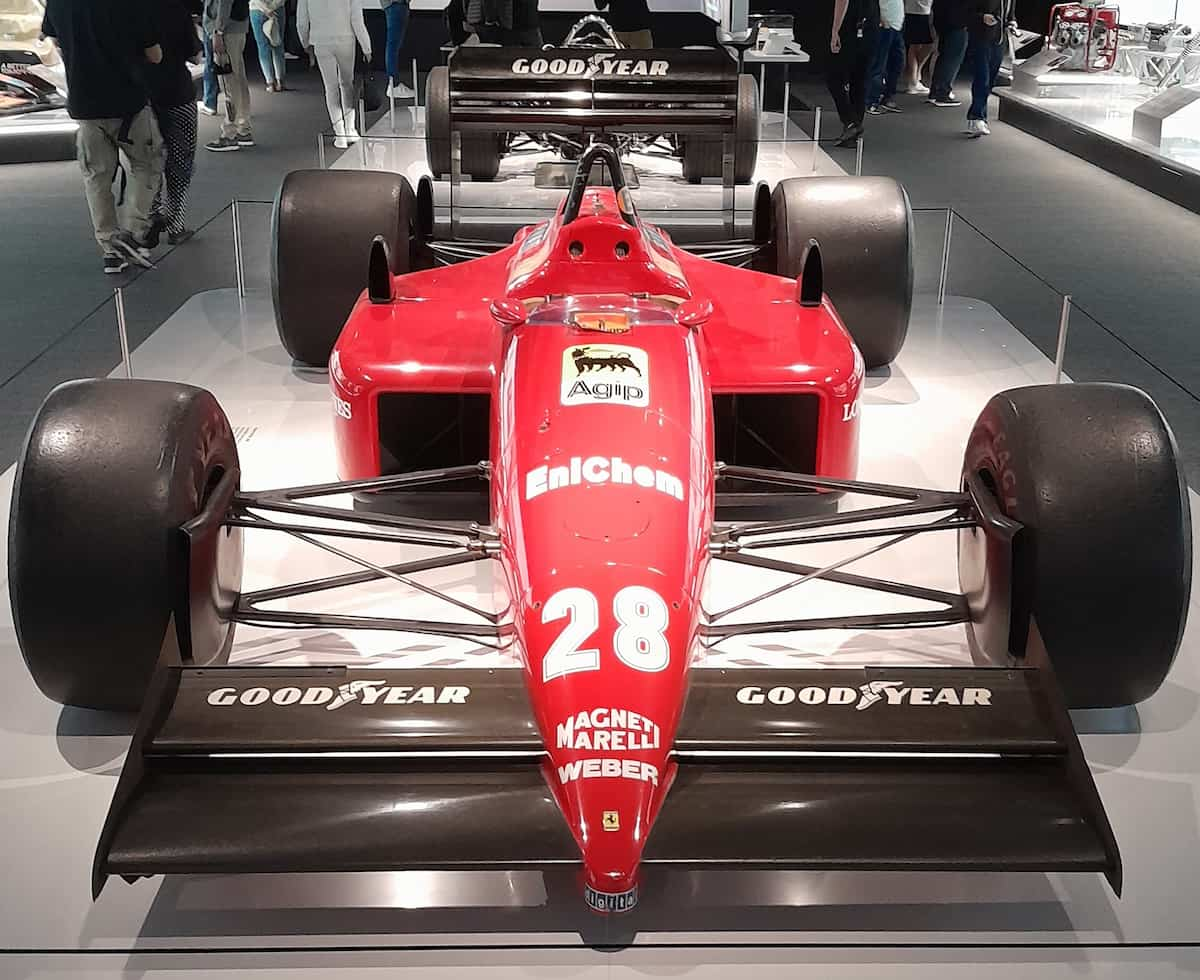
Final Thoughts
F1 front wings are key aerodynamic components on the cars. They are used to generate downforce, and they also play important roles in guiding airflow under and around the car. They have changed a lot over the years, with the 2022 rule changes simplifying them compared to previous years.
I created and have been writing on this site since 2019, collaborating with drivers, coaches, engineers and manufacturers to provide you with the most reliable information about motorsport. I also make beautiful car posters and track posters.



